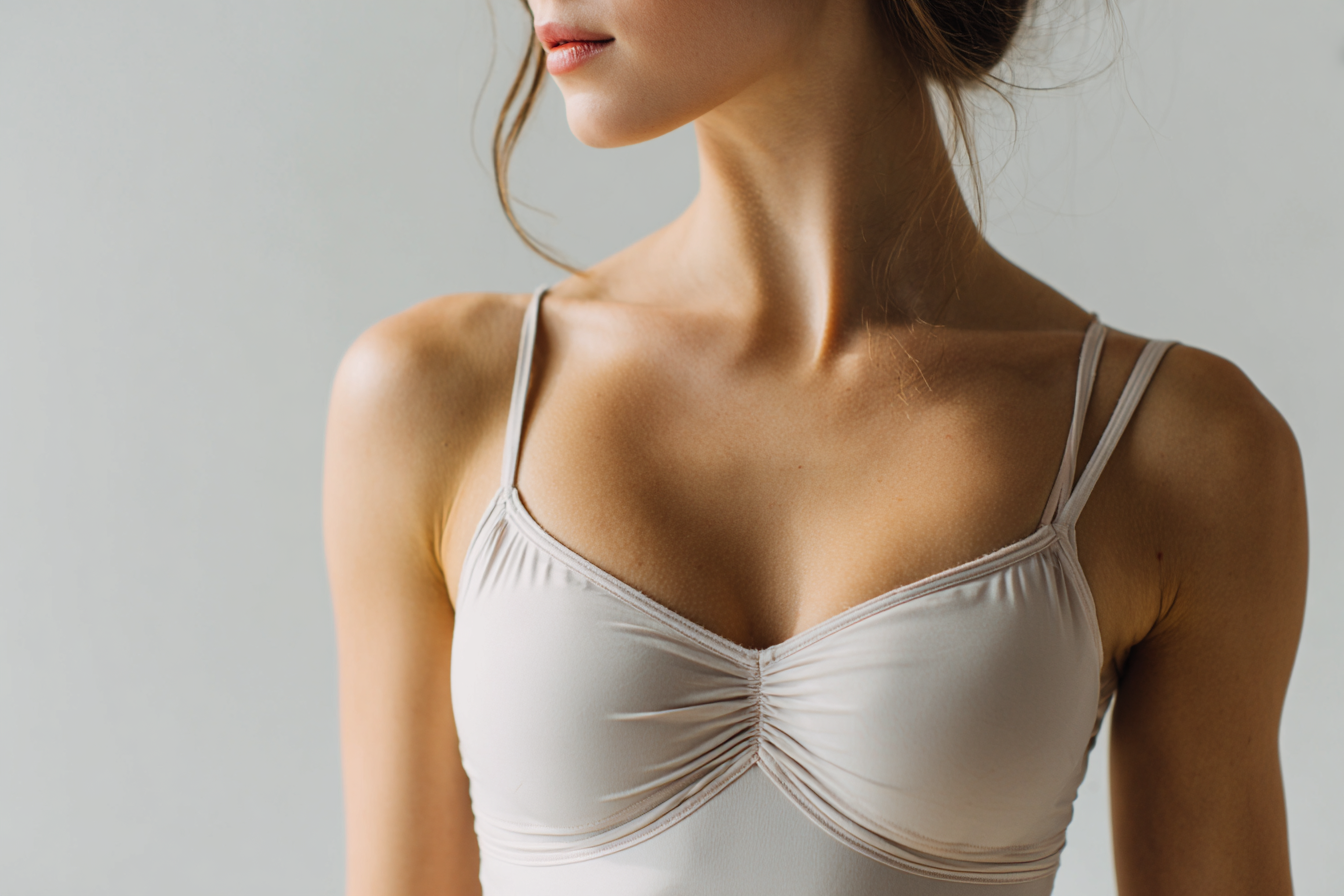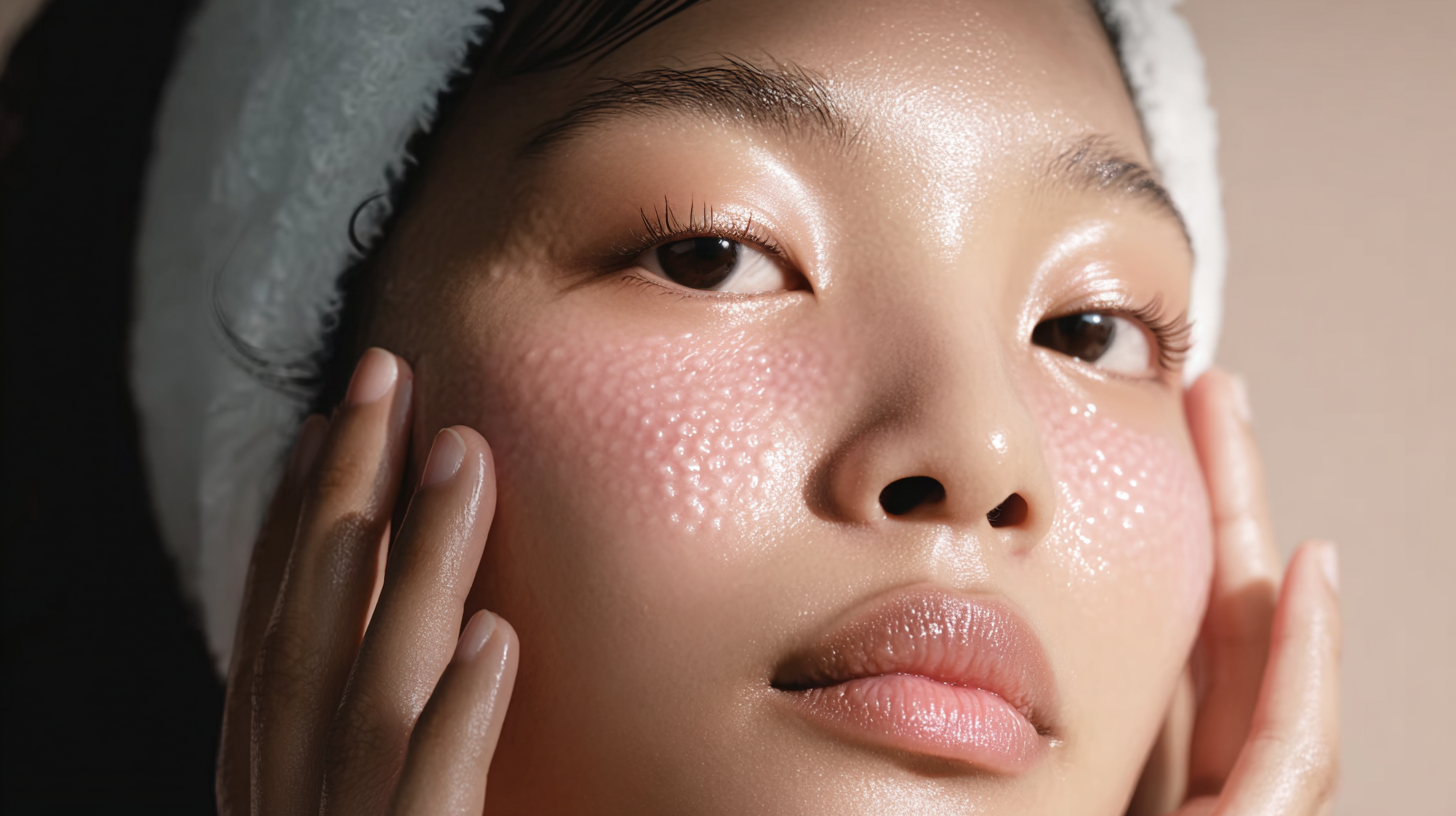The Big Appeal of Going Smaller with Subtle Ballerina Breast Plastic Surgery
Breast augmentation is being rethought. Patients who once asked for obvious volume now arrive with screenshots of neat, high-sitting results that read as athletic and proportionate. In clinic language this is the ballerina breast look. It signals a preference for control over conspicuity, and it is changing the pre-op conversation across the UK and beyond.
Cosmetic and Plastic Surgeon Dr Paul Banwell of Pantheons Clinic frames it simply. “Ballerina breasts refer to a specific look that is much more of a natural enhancement rather than focusing on a dramatic change. There is more of an emphasis on a natural reshaping and volumising to fit your frame and creating a beautiful, harmonious balance.” In practice that often means smaller cohesive gel implants, typically in the 150 to 275 cc range, moderate or moderate-plus profiles, and careful pocket creation that preserves soft transitions. For slim and athletic frames, surgeons may add small-volume fat grafting or a lift to achieve position and projection without chasing size.
Planning is as important as the operation. “Behind the philosophy of ballerina breasts is ensuring that the end result will fit the patient’s frame,” says Banwell. “As with all procedures, the consultation process is key. Listening to patients’ wishes is fundamental to creating a tailored result.” He still uses the classic rice bag sizer test, but he now supplements it with 3D visualisation. “The incorporation of Adoreal’s 3D Visualisation software is an extremely useful adjunct to help patients visualise the potential outcome.” He also links the trend to a wider surgical shift. “The rise in interest in ballerina breast has also coincided with the emergence of tissue preservation surgery, which now represents the cutting edge of cosmetic breast surgery.”
Motivation has evolved too. “I have definitely noticed a shift in what patients are seeking,” Banwell notes. “More and more women are looking for a more natural, shapely result rather than an obvious enhancement.” He points to platform data from Adoreal indicating that a majority of patients cite confidence and self-esteem as core drivers, with many wanting to enhance features rather than change them outright. That aligns with what surgeons are hearing in first consultations. Patients want breasts that sit correctly in sportswear, do not fight with posture, and look credible in a vest top. The aesthetic is not absence but calibration.
Consultation dynamics are reflecting this change across the field. London-based plastic surgeon Mark Solomos, Plastic Reconstructive & Aesthetic Surgeon, describes the last year and a half as decisive. “Over the past 12 to 18 months, I have definitely noticed a growing number of patients enquiring about smaller breast implants or even downsizing from previous augmentations. There is a clear shift towards a more natural, proportionate aesthetic, with many patients prioritising longevity, comfort, and subtlety over volume. In clinic, this has translated into a nuanced dialogue about body harmony and long-term outcomes.” He spends more time on silhouette, base width, projection, tissue quality and ageing. “Smaller implants can often offer better long-term satisfaction and fewer complications,” he says. On demographics he sees a split. “Younger patients in their early twenties do not want to go as big as people ten or fifteen years before them. People are looking for a more athletic, refined and understated look.” He also observes cultural and regional differences. “From my work, countries like Italy and Spain rarely go for big sizes, while in America patients often opt bigger. In the UK I have seen a north–south divide, with northern patients tending to choose larger, and more south or London-centric patients going smaller.”
Technique is changing to meet these expectations while protecting tissue. Banwell reports growing interest in newer preservation-led methods. “Unlike traditional methods that involve cutting through muscle, blood vessels and vital tissue and ligament structures, Preservé uses a gentler, more anatomical approach. First, the surgeon creates a space using a specially designed balloon expander, a nest, for the implant. This stretches tissues and blood vessels rather than cutting them and critically preserves the circum-mammary ligament, which gives more stability and aims to improve long-term results.” He also highlights Mia FemTech as a harmonisation option. “The Mia procedure is a patented, injectable breast harmonisation technique that allows for significant enhancement with smaller implants. Engineered to provide a natural result with a one to two-cup size increase, the Mia implants are inserted using a unique no-touch technique that preserves breast tissue and avoids muscle disruption. The entire process takes just 30 minutes, with patients typically able to leave the clinic 90 minutes after arrival. This rapid turnaround, combined without necessarily the need for general anaesthesia, allows patients to return to most activities within a weekend.” Devices like Motiva Preservé and workflow tools like Adoreal’s 3D modelling give surgeons more ways to keep outcomes subtle, stable and predictable for the right candidate.
Downsizing sits inside the same story and requires frank counselling. “Downsizing is a completely separate situation,” says Banwell. “If you are downsizing an already existing breast implant, while good quality and youthful skin helps, there is a possibility of loose skin due to laxity and stretching. There are ways to help this, such as with a breast lift.” Many women who augmented in the 2000s now return to exchange larger implants for smaller ones, or to combine explant with mastopexy. The aim is comfort, clothing fit and a breast that matches an active routine. First-time patients often open with a request for a change that will not read as surgery in the workplace or gym. Both groups benefit from honest discussion about what a modest implant can and cannot do.
Risk counselling should be specific and current. Smaller, lighter devices place less mechanical strain on tissue, which may help with long-term support, but implants remain medical devices with known surveillance needs. Scars are normal and fade in most cases. Banwell notes that advanced methods can help to minimise their visibility, and preservation-led techniques can reduce tissue trauma. Patients still need to understand screening for silicone rupture, the possibility of capsular contracture, and the risk of animation in highly athletic patients with submuscular placement. Subfascial pockets can reduce animation but may trade off some coverage in very lean frames. Fat transfer is valuable for contour and edge concealment, but volume gains are modest. Setting these limits clearly keeps revisions low and satisfaction high.
Ethics and psychology are part of the work. Banwell has long embedded mental health support into his pathway. “I always ensure there is an in-house psychologist. I was one of the first plastic surgeons in the UK to have a psychologist practising alongside me in clinic as I know how important it is for patients to feel they are making the right decision for themselves before going through with the procedure.” Visualisation helps here too. “By using the Adoreal system, patients feel supported throughout the process, from the first consultation to recovery. Through the 3D software, patients are able to view themselves with their chosen implants before the surgery, so they feel more at ease and happy with their decision.”
The business implications are straightforward for clinics and journals. Demand is not shrinking, it is maturing. Treatment menus should foreground proportion, movement and longevity rather than cup jumps. Before and afters that show clean lines in sportswear will resonate more than lingerie shots. Package pathways that combine small implants with targeted fat grafting or mastopexy will meet the brief better than size-led menus. Consults should make space for body-wide planning, mental health screening and digital visualisation so patients understand the difference between subtle and insufficient.
The ballerina breast is not a fad so much as a correction. It brings breast surgery back to anatomy, to balance and to credibility at conversational distance. For medical beauty professionals it is a chance to refine practice, refresh language and guide patients toward results that fit their lives. The request may be smaller, but the craft is not. Right now that craft is what sets the best work apart.










